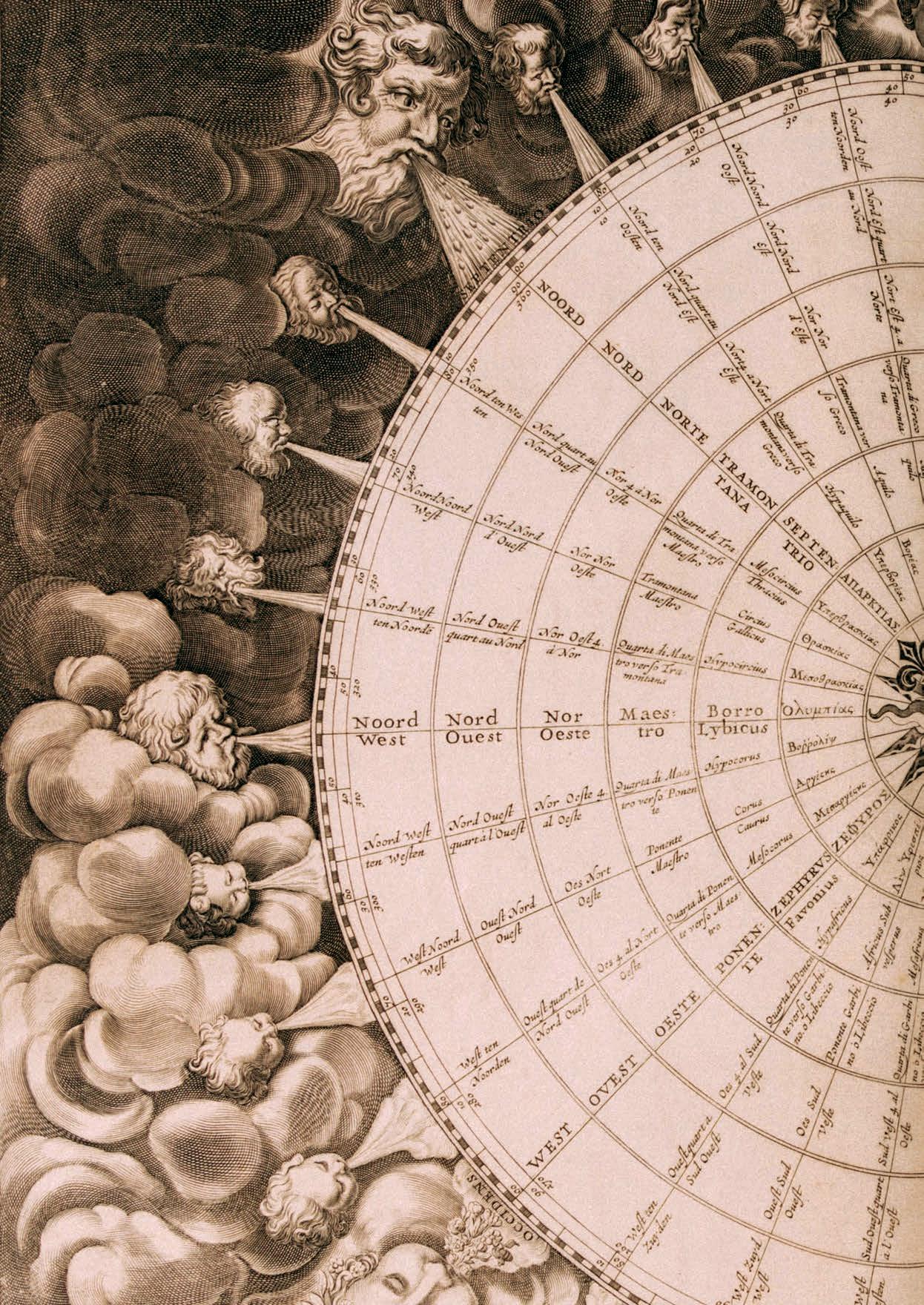
2 minute read
M Maps
Maps
As a mercantile people, the Dutch were unsurpassed masters of cartography, taking inspiration from the Flemish Renaissance mapmakers, Gerardus Mercator and Abraham Ortelius.
The latter, as well as key figures of 17th-century Dutch cartography, Willem Janszoon Blaeu, Frederik de Wit, Johannes de Ram and Nicolaus Visscher, are all represented in the College Rare Books collection.
One hundred maps by several hands are gathered in a magnificent composite Atlas published by De Ram. Compiled in 1685, the Atlas consists of large fold-out copperengraved maps, all teeming with details of towns, terrain and even fauna, and coloured by hand with extraordinary precision and beauty. Merchants and private citizens alike bought such atlases to order, priced according to the quantity of maps required and their level of finishing. The College’s comprehensive Atlas with maps of the Americas, Africa, Asia and all parts of Europe, and with lavish colour on every opening, stands at the de-luxe end of the scale. Shown here is a planispheric presentation of the Earth’s two hemispheres which serves as the Atlas’s inner title page. We show a general map of the British Isles that precedes more detailed individual presentations of Ireland, Scotland, and England and Wales. Notable is the relative insignificance of later industrial cities such as Manchester, Birmingham or Leeds; in the 17th century such places were still only sizeable market towns. Emphasis was placed instead upon cathedral cities, an indication of the continuing importance of the Church.

De Ram’s Atlas also offers views of regions far beyond Europe, such as China and Japan. For this, De Ram needed to call in the expertise of another mapmaker, Joan Blaeu, who had drawn up maps of these territories from information supplied to him by the missionary Martino Martini, the Jesuit Superior in the Far East. Blaeu’s map of Japan in particular is a rare document of a kingdom long debarred to European visitors. Also interesting is just how well understood the north coast of Australia was to Dutch cartographers. A century before Captain Cook ‘discovered’ Australia, the Dutch had already mapped the northern part of ‘Hollandia Nova’.
Another type of map is a chart of the winds first published in 1650 by Joannes Janssonius. Entitled Tabula anemographia seu pyxis nautica ventorum nomina sex linguis repraesentans, the map shows the directions of the winds in all quarters of the globe, listing their names in six languages – Dutch, German, Spanish, French, Italian and Latin. Historians of cartography call maps of the winds ‘wind roses’ because of their concentric form, and the puffing heads ‘wind blowers’ or ‘wind heads’. Janssonius shows 32 such wind heads ventilating every region of the Earth.














